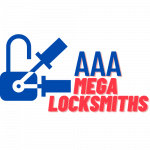In a world where security concerns continue to be paramount, the installation of a safe has become a crucial aspect of safeguarding one’s valuable possessions. According to recent statistics, over 2.5 million burglaries occur annually in the United States alone, with an average loss of approximately $2,799 per incident. These alarming figures highlight the importance of taking proactive measures to secure your belongings, and installing a safe is undoubtedly one of the most effective steps you can take.
However, not all safe installations are created equal, and choosing the right location can make all the difference in ensuring the security of your assets. In this comprehensive guide, we will explore the best and worst places to install a safe, taking into account various factors, including the type of safe, size, security levels, accessibility, and the specific needs of both homeowners and businesses.
Types of Safes
Before we explore the intricacies of safe placement, it is imperative to acquaint ourselves with the diverse types of safes available in the market. From wall safes concealed within your home’s structure to floor safes camouflaged beneath your feet and free-standing safes boldly asserting their presence, the choices are vast. Each type serves a unique purpose and offers distinct advantages.
Considerations for selecting the right type of safe go beyond mere aesthetics. Key factors include the safe’s size and capacity, the sophistication of its security features, and its ability to withstand fire and water damage. These considerations will play a pivotal role in determining where and how to install your chosen safe for maximum protection.
Best Places to Install a Safe
Home Locations
| Master Bedroom | Many homeowners choose to install a safe in their master bedroom. It provides easy access to important documents, jewelry, and firearms while maintaining a level of privacy. |
| Home Office | If you have a home office, consider installing a safe there. It’s a logical place for important paperwork and electronic devices. |
| Basement or Utility Room | The basement or utility room is a less obvious location for a safe, making it a good choice for concealing valuable items. Ensure proper waterproofing and security measures in these areas. |
Business Locations
| Office | In a business environment, the office is often the most practical location for a safe. It’s accessible to employees during working hours and provides a secure place to store cash, important documents, and sensitive data. |
| Storeroom | If your business has a storeroom, this can be a suitable location for a safe. It allows for secure storage of inventory, backup files, and valuable equipment. |
| Cash Register Area | For retail businesses, placing a safe near the cash register is a common practice. It minimizes the amount of cash on hand and deters theft. |
Worst Places to Install a Safe
While it is essential to know the best locations for safe installation, it is equally imperative to be aware of the common pitfalls associated with poor placement. Here are some of the worst places to install a safe, along with the inherent risks they pose:
| Obvious Locations | Placing a safe in plain sight essentially nullifies its security advantages. Common mistakes include situating the safe in the master bedroom closet (a favored target for burglars), the living room, or other areas where it stands out conspicuously. |
| Close Proximity to Valuables | Avoid installing the safe too close to the very valuables it is meant to protect. For instance, situating a safe right beside a display cabinet of jewelry renders it ineffective, as burglars are likely to target both simultaneously. |
| Lack of Structural Support | A safe must be anchored securely to a robust structure, such as a concrete floor or wall. Installing it in a location devoid of adequate support leaves it vulnerable to theft. |
Risks Associated with Poor Placement
Inadequate safe placement can have devastating consequences:
| Easy Accessibility for Burglars | Placing a safe in an obvious or easily accessible location increases the risk of it becoming a target for burglars. They may attempt to break into the safe on-site or simply remove it for later exploitation. |
| Fire and Flood Hazards | If a safe is located in an area susceptible to fire or flooding, it may fail to protect your valuable documents and possessions during a disaster. Evaluating these risks is crucial when determining the installation site. |
| Inadequate Concealment | Inadequate concealment makes it easy for burglars to discern the safe’s location, effectively compromising the element of surprise and security. |
Home Installation Tips
Now that we have explored the best and worst locations for safe installation, let’s delve into some installation tips to ensure your safe is not only properly placed but also effectively secured:
Detailed Instructions for Safe Installation in Various Locations
Different types of safes may come with specific installation requirements. Follow the manufacturer’s guidelines meticulously, and consider enlisting the assistance of a professional if necessary. A well-executed installation ensures optimal security.
Securing the Safe to Prevent Removal
Securing the safe to prevent unauthorized removal is paramount. Bolts, anchors, and other fasteners should be of high quality, resistant to tampering, and installed with precision. This serves as a formidable deterrent against thieves seeking to abscond with your safe.
Choosing the Right Anchoring Method
The choice of anchoring method should align with the type of safe and its intended location. Concrete bolts, floor reinforcement, and wall mounts may all be required at various junctures. Seek professional advice if you harbor any doubts regarding the most suitable anchoring method for your specific scenario.
Business Installation Tips
For businesses, the correct installation of a safe is critical to the protection of assets, cash, and sensitive documents:
Commercial Safe Placement Considerations
While installing a safe within a business setting, contemplate the flow of your daily operations. It should be convenient for authorized personnel while remaining inaccessible to the general public or potential thieves. Striking this balance is crucial.
Security Protocols for Employees
Implement rigorous security protocols for employees who possess access to the safe. This encompasses limiting access exclusively to authorized personnel and periodically updating access codes or keys to maintain security.
Alarm and Monitoring Systems
Integration Integrating the safe into your business’s overarching security system enhances protection. Link it to alarm systems, surveillance cameras, and monitoring services to fortify your security measures.
Maintenance and Upkeep
Once your safe is correctly installed, establishing a routine for maintenance and upkeep is crucial:
Regular Inspection and Maintenance |
| Routines Scheduled inspections ensure that the safe functions optimally. Lubricate the locking mechanism and hinges as required, and conduct thorough examinations to detect any signs of wear or damage that may compromise security. |
Updating Security Features and Technology |
| In an ever-evolving technological landscape, consider periodic upgrades to your safe’s security features. This may entail replacing traditional locks with electronic ones or integrating the safe into a smart home or business security system. |
Periodic Safe Reinstallation if Needed |
| Circumstances change, and occasionally, you may need to move to a new location. In such cases, contemplate the reinstallation of the safe to ensure that it remains situated in the most secure and accessible location possible. |
Install A Safe In A Manner That Best Serves Its Purpose
In conclusion, the installation of a safe is a pivotal step in securing your valuable possessions and sensitive documents. Mastery of the best and worst places to install a safe is a requisite skill for ensuring the safety of your treasures. Whether you are safeguarding assets within the confines of your home or securing critical business documents and cash reserves, meticulous attention to safe placement is paramount.
Remember, consulting with a professional is always a prudent choice to guarantee that your safe installation aligns with the highest security standards. By embracing these essential precautions and security measures, you can bask in the reassuring knowledge that your valuables are fortified against the ever-present threats of theft, fire, and disaster. Safe installation is not just about security; it is about safeguarding your peace of mind.

Moran Eliezer is the visionary founder of AAA Mega Locksmiths, a trusted name in Coral Springs, FL, and surrounding communities including Coconut Creek, Margate, and Pompano Beach. With over 15 years of hands-on experience, Moran merges traditional locksmithing with modern solutions, ensuring every lock is robust and customer-focused. From residential security to commercial systems and automotive lock issues, Moran’s unwavering commitment to affordability, integrity, and customer satisfaction has solidified AAA Mega Locksmiths’ reputation. His forward-thinking approach, including cutting-edge technologies, keeps the company at the industry’s forefront. Whether responding to emergency lockouts or installing high-security systems, Moran’s meticulous attention to detail assures clients their needs are met with precision and care. As a family-owned business, AAA Mega Locksmiths reflects Moran’s philosophy of trust, reliability, and personalized service—qualities that define him as an authority in locksmith solutions.

